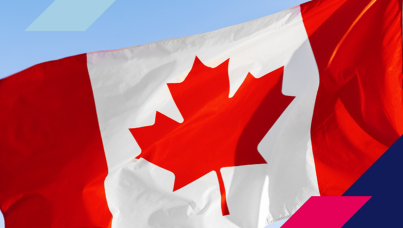Federal Political Scene Early October 2000
In the Run-Up To a Possible Fall Election, Healthcare (53%) and Education (25%) are at the Top of the Issues Agenda
Toronto, ON - The results of an Ipsos-Reid/CTV/Globe and Mail poll show that on the eve of a potential election call, support for the Liberals has risen 8 points to 52 percent while support for the Alliance has fallen 5 points to 20 percent. The PCs and the NDP continue to fade away, both reaching lows of 8 percent support. As talk of a fall election continues, Healthcare (53%) continues to top the issues agenda, while education (25%) is a consistent second.
These are the findings of an Ipsos-Reid/CTV/Globe and Mail poll conducted between October 5th and October 12th, 2000. The poll is based on a randomly selected sample of 1,500 adult Canadians. With a sample of this size, the results are considered accurate to within 177 2.5 percentage points, 19 times out of 20, of what they would have been had the entire adult Canadian population been polled. The margin of error will be larger within regions and for other sub-groupings of the survey population. These data were statistically weighted to ensure the sample's regional and age/sex composition reflects that of the actual Canadian population according to the 1996 Census data.
Liberals (52%) on the Move in Run-Up to Election While Support for the Alliance (20%) Slips
With an election call rumoured to be right around the corner, national support for the Liberals (52%) is at its highest point since before the 1997 election. Liberal support has risen 8 points nationally with similar increases in every region of the province. The Liberals' biggest jump in support comes in BC (48%) and in the Prairies (46%) where their support has increased by 13 points since late September 2000. In Alberta, Liberal support (37%) has increased 10 points and in Quebec the Liberals (49%) have seen their support rise by 9 points thereby giving them a 10-point lead on the Bloc Quйbecois.
Support for the Liberals has also increased in their strongholds of Ontario and Atlantic Canada. In Atlantic Canada, where rumours are swirling about a potential return of Brian Tobin to the national political scene, Liberal support has increased 6 points and is now at 58 percent. Finally, in Ontario, the most important province electorally, support for the Liberals has increased four points to 60 percent thereby increasing the Liberals' lead over the Alliance to a whopping 41 points.
Much of the increase in Liberal support seems to have come at the expense of the Alliance (20%) which has dropped 5 points nationally since late September and has lost a similar amount of support in every region of the country except Atlantic Canada. In fact, the Alliance has gone from leading the Liberals in all four western provinces to leading the Liberals only in Alberta. The Alliance's largest drop (12 points) occurs in Manitoba and Saskatchewan (23%) where the Liberals have turned a 2-point deficit into a 23-point lead over the Alliance. Even in the Alliance stronghold of Alberta, Alliance support (47%) has dropped 8 points and the Liberals are now within 10 points of the front-running Alliance. Despite the Alliance's attempts to woo members of the Bloc Quebecois, their support in Quebec (5%), has dropped 6 points and in BC (39%) they have lost 4 points. In Ontario the Alliance has slipped 2 points (within the margin of error) and is now polling at 19 percent. Atlantic Canada is the only region where the Alliance has not lost support and continues to receive the support of 11 percent.
- Liberal support is highest among younger (56%) as opposed to middle aged (50%) or older (52%) Canadians.
- Men (50%) are less likely than women (55%) to say they support the Liberals.
- In contrast, men (25%) are more likely than women (16%) to support the Alliance.
- And, older Canadians (24%) are more likely than middle aged (21%) or younger (16%) Canadians to support the Alliance.
Tories (8%) and NDP (8%) - At Historic Lows
In contrast with the rising support of the Liberals, support for the PCs (8%) and the NDP (8%) continues to fade away. Both parties are now at their lowest level since before the 1997 election. The Tories fare the best in the Atlantic Provinces where they have the support of about one in five (19%) but that is 14 points below the support they received in the last election. Meanwhile, the NDP receives its highest support from Saskatchewan and Manitoba (16%) but its support in that province is 11 points below what it was during the 1997 election.
In Quebec, the Bloc Quebecois continues to receive the support of 4 in 10 (39%) but because of the recent rise in Liberal support, they now lag 10 points behind the Liberals.
In the Run-Up to a Possible Fall Election, Healthcare (53%) and Education (25%) are at the Top of the Issues Agenda
With an election call possibly scheduled for October 22, healthcare (53%) continues to dominate the issues agenda. For over a year now and despite recent injections of money from both the federal and provincial governments, healthcare continues to be the issue that Canadians feel should receive the greatest attention from Canada's leaders. Education (25%) comes in a distant second place - a position it has occupied since November 1999. Other top-of-mind issues include:
- Taxes/Taxation - 18%
- Deficit/Debt/Government Spending - 16%
- Jobs/Unemployment - 13%
For more information on this news release, please contact:
Dr. Darrell Bricker
President and COO
Public Affairs
Ipsos-Reid
(416) 324-2900



